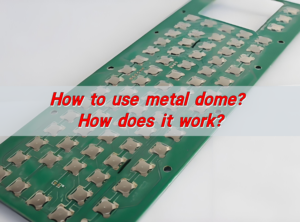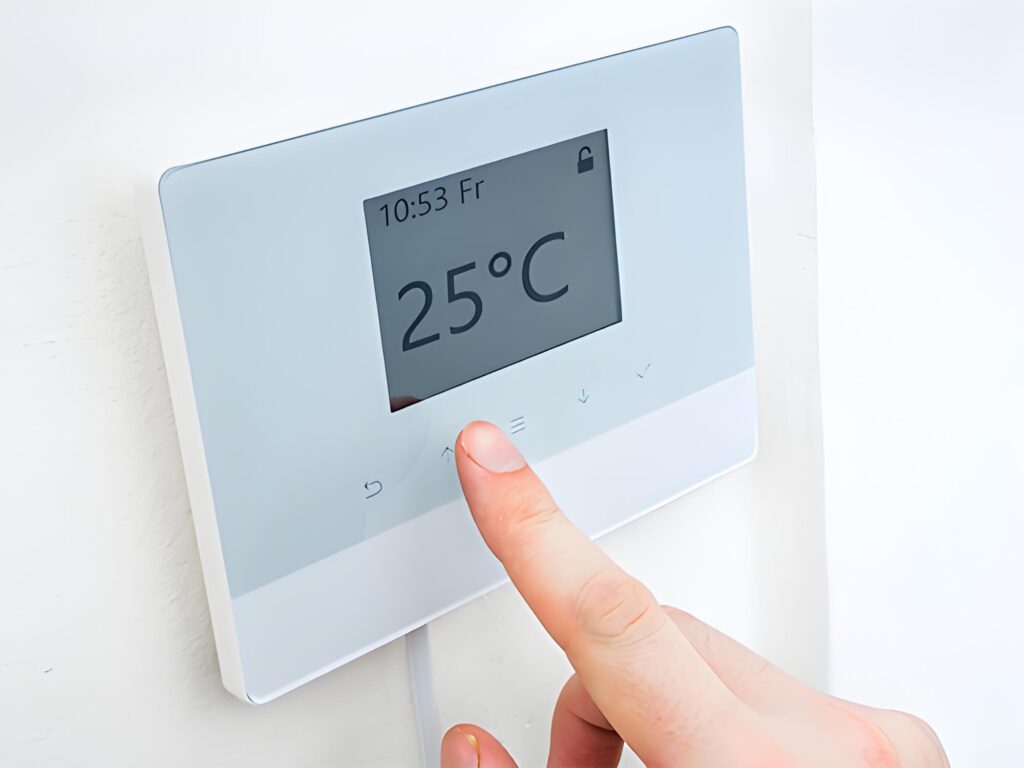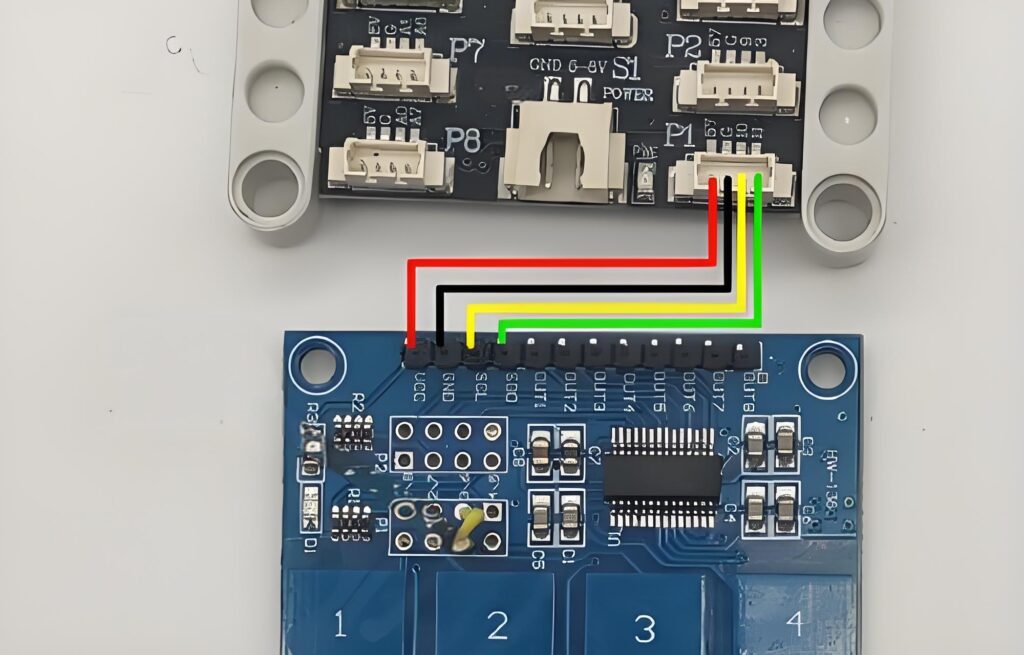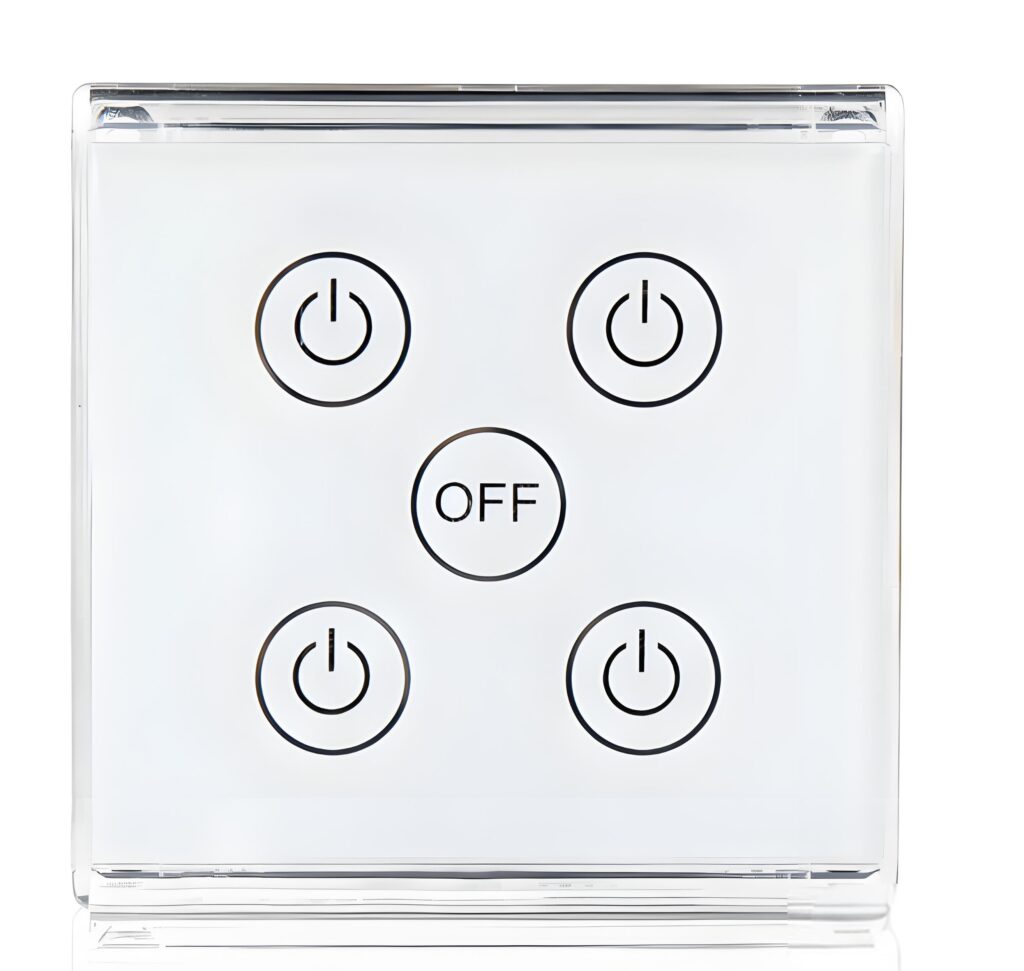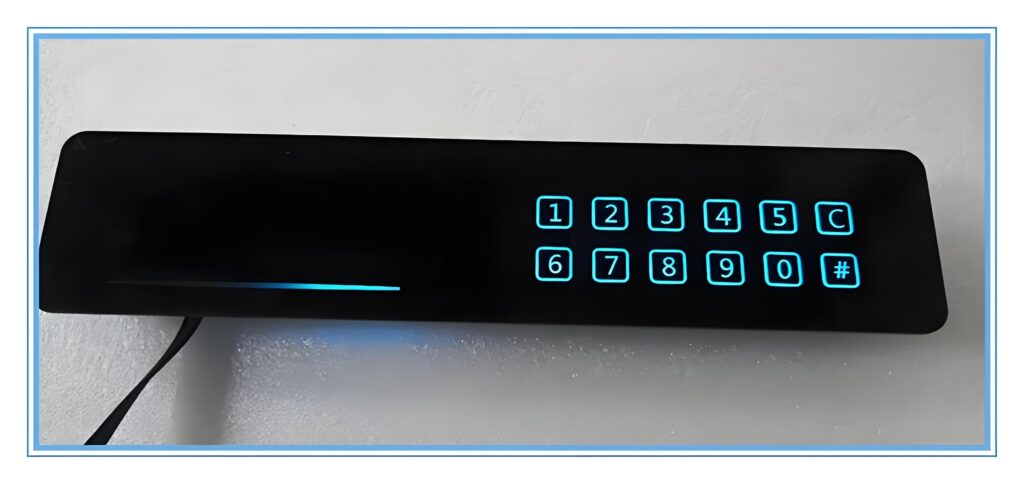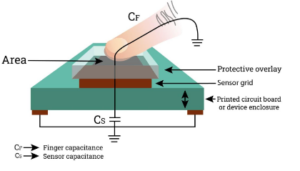A capacitive touch switch is an electronic switch that uses the principle of capacitance change to achieve touch control. It determines whether a touch operation occurs by detecting the capacitance change formed between the human body or other conductive objects and the touch sensing area, and performs corresponding switch control according to the preset functional logic.BEST Technology specializes in designing different types of switches and supports the production, proofing and assembly of various switches.
What is a capacitive touch switch?
A capacitive touch switch is an electronic component that uses the capacitance of the human body and objects to sense touch actions and switch states.
Specifically, when a finger or other object approaches the touch panel, a capacitor is formed. The change in this capacitance is detected by the internal sensing circuit and converted into an electrical signal for processing. The control circuit switches the switch state according to these signals.
Capacitive touch switches are mainly composed of the following parts:
Shell: Usually made of plastic or metal materials, the shape and color can be designed according to requirements.
Touch panel: Made of conductive materials, such as metal or conductive coating, common shapes include round, square and rectangular.
Sensing circuit: used to sense and detect touch actions, usually composed of multiple conductive layers and insulating layers.
Control circuit: processes the signal output by the sensing circuit and switches the switch state according to the touch action.
Because capacitive touch switches have the characteristics of sensitive touch, long life, and beautiful appearance, they are widely used in various fields:
Smart home: used to control indoor lighting, curtains, air conditioners and other equipment to improve the comfort and convenience of life.
Industrial control: used for mechanical equipment start and stop switches, buttons for adjusting parameters, etc., to improve the automation and intelligence level of industrial production.
Consumer electronic products: such as remote controls, lamps, household appliances, etc.
How does a capacitive touch switch work?
First, its internal circuit generates an electrostatic field in the touch sensing area. Then, when a conductive object such as a human finger approaches or touches the area, the capacitance value here will change, and the distance between the human body and the sensing area, the contact area, etc. will affect the size of the change.
Then, the internal circuit continuously monitors the capacitance change, and after detecting the change beyond the preset threshold, it converts it into an electrical signal and processes and analyzes it to determine whether it is a valid touch.
Finally, if it is determined to be valid, it sends instructions to the control circuit according to the preset logic to control the switch on and off to achieve control of the electrical equipment.
Does the switch have a capacitive touch screen?
Yes, the switch has a capacitive touch screen.
A capacitive touch screen switch is a switch device based on capacitive touch screen technology. It detects the tiny current changes generated when the human body touches it to determine the touch action, thereby realizing the control of the switch. This type of switch is widely used in smart homes and other occasions that require intelligent control.
What are the disadvantages of touch switches?
The disadvantages of touch switches mainly include the following aspects:
Sensitivity problem: Some touch switches may have problems such as fingers not being recognized or needing to be pressed hard, resulting in inconvenience in use.
Mistouch problem: The touch switch has a high sensitivity and is prone to mistouch, causing lights or appliances to switch on and off accidentally.
Short service life: The service life of a touch switch is relatively short, and it does not last as long as an ordinary switch.
High price: Compared with traditional key switches, touch switches have a higher manufacturing cost and are relatively more expensive.
Fault problem: After long-term use, the touch key may malfunction and is not as durable as a mechanical key.
Ways to solve the disadvantages of touch switches include:
Enhance sensitivity adjustment: Add a sensitivity control module and adjust it as needed.
Refined design: By designing special operation methods, such as double-clicking and long pressing, it is effective to avoid accidental touch.
Environmental adaptation: Use more suitable materials and technologies to make the touch switch adapt to different environmental conditions.
Price optimization: With the continuous development of touch technology, the manufacturing cost will decrease, and the price will become more and more affordable.
In general, although there are some shortcomings of touch switches, these problems can be effectively solved through technical improvement and optimization.
How is a touch switch different from a normal switch?
There are significant differences between touch switches and ordinary switches in terms of function, installation, user experience and price.
1. Functional difference
Touch function: The touch switch is controlled by touch operation, while the ordinary switch is operated by mechanical buttons.
Sound effect prompt: The touch switch can emit a prompt sound, while the ordinary switch usually has no prompt sound when operating.
Night light function: The touch switch can be used as a night light at night, while the ordinary switch does not have this function.
Remote control function: The touch switch has a remote control function and can be controlled at a long distance, while the ordinary switch does not have a remote control function.
2. Installation differences
Wiring method: Touch switches usually do not need to be rewired during installation and can directly replace old mechanical switches, while the installation of ordinary switches may require more wiring work.
Applicable scenarios: Touch switches are suitable for scenarios that require frequent operation or avoid contact pollution; ordinary switches are suitable for most home and industrial scenarios.
3. Differences in user experience
Convenience of operation: Touch switches are easy to operate and can be controlled with just a touch, while ordinary switches require key operation and have a poor feel.
Safety and durability: Touch switches adopt an integrated design, are waterproof and leak-proof, have a high safety level, and have no mechanical function keys, and have a long service life; ordinary switches are prone to aging and are risky to operate in a humid environment.
Noise: Touch switches can turn off the prompt tone through the DIP switch to reduce noise; ordinary switches will make a clicking sound when operating.
4. Price differences
Cost: Touch switches are usually more expensive because they have higher technical content and intelligence; ordinary switches are relatively cheaper.
Failure rate: Touch switches have a relatively high failure rate, while ordinary switches are more durable.
In summary, touch switches and ordinary switches have their own advantages and disadvantages. Which switch to choose depends on specific usage needs and personal preferences.
Are touch switches safe?
Touch switches are usually safe. From the perspective of electrical safety, they have good insulation design and good insulation of the shell material; they can control the leakage current within a safe range; and they also have overvoltage and short-circuit protection devices.
From the perspective of safety of use, there are anti-mistouch designs, touch switches used in specific environments have waterproof properties, and high-quality products have anti-interference capabilities. However, inferior touch switches may have safety hazards due to poor quality and unreasonable design.
What is the purpose of a touch switch?
The uses of touch switches are very wide, mainly including the following aspects:
Home lighting control: Touch switches are widely used in home lighting and can be used for lighting control in various places such as living rooms, bedrooms, and restaurants.
Home appliance control: Among many home appliances, touch switches are increasingly widely used.
Security control: Touch switches can also be used in the field of security. The touch screen can achieve a safe and fast way to open and close, ensuring family safety.
Audio control: In the field of audio, touch switches can be used to adjust the volume, timbre and other parameters of the audio, which is convenient and practical.
Other uses: Touch switches are also used in aviation, automotive, medical and other fields.
In short, capacitive touch switches play an important role in today’s electronic devices and smart homes with their unique working principles, significant characteristics and wide application fields. It meets the needs of different scenarios with its simple and beautiful appearance design, fast response, good waterproof and dustproof performance and long service life.


